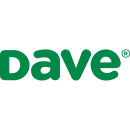Josh Fowler, a product manager at software company Repeat, was espousing the virtues of collaboration when he realized the insights of a coworker might be better suited for the task at hand.
“In thinking about this question,” he began, “I sat down with a partner of mine in customer success, Mark Johnson, to discuss the ways we currently nurture our relationships and what we would like to implement for further improvement.”
Fowler knew what he was doing. By attributing his answer to a colleague — in this case, a frequent collaborator in a department that doesn’t always see eye-to-eye with his own — the intuitive PM was embodying a mentality that consistently results in meaningful collaborations: a willingness to listen — and assign credit to — outside perspectives.
“The first thing we agreed on was clear: how critical, yet often overlooked, this initial discussion is to building a harmonious relationship between customer success and product,” Fowler said. “From that baseline, we can build processes that allow both teams to share feedback, transparently track our progress and take decisive action with the certainty that we are working toward a shared success.”
Yet what might be clear to some can still prove elusive for others. That’s why Built In Los Angeles spoke with four local tech professionals to learn why successful collaboration isn’t just valuable for employees — it’s good for customers and a company’s bottom line as well.
Tell us a bit about how your customer success and product teams work together.
Dave is a member-centric company, so a baseline for understanding the needs of our users is deeply rooted in the company. We look to cultivate our partnership with our product teams by using real-time data monitoring to give information right at the intersection of design and ideation. We monitor and provide member feedback for direct “voice of member” advocacy via our customer satisfaction surveys and net promoter score data, and we prioritize usability throughout the in-app experience. My goal is to support those who have an impact on member experience, which includes both our member success and product teams, so we can all do more to meet their needs.
What is the biggest challenge you see CS and product teams run into when working together?
Prioritization is often the biggest challenge between teams who support the frontline versus those who manage the product foundation. The most important part of overcoming this obstacle is to create the space for ideation together and keeping the member first. This leads to mutually beneficial wins for both teams.
Fostering cross-functional collaboration is the key to long-term success.”
What’s a strategy you’ve found to be particularly effective for creating and maintaining alignment among teams?
The best strategy I have found is for each team to spend a day in the life of the other. It’s easy to think alignment is simple if we are all keeping the member first, but having an employee on the product team read member emails and chats and listen to calls while also having a customer service agent understand queries and root cause analysis enables each person to meet the other in the middle. This united understanding creates respect, creativity and understanding of the roles each of us play to optimize our members’ experience. Fostering cross-functional collaboration is the key to long-term success.
Tell us a bit about how your customer success and product teams work together.
At Seer Interactive, our goal is to help clients solve problems in their dynamic, fast-paced industries. To do this successfully, our customer success teams bring these challenges back to our product teams so we can provide innovative solutions. Our goal is to have a constant feedback loop so our product team is focused on high-value development that scales across our client partners.
Our goal is to help clients solve problems in their dynamic, fast-paced industries.”
What is the biggest challenge you see CS and product teams run into when working together?
Prioritizing requests could be an obstacle at times where there are a lot of initiatives on the docket. An easy way to prioritize is asking ourselves, “Can this work for more clients?” If it’s a scalable solution we can test with a client or two but that can also serve other businesses with similar questions or challenges, we know it’s worth trying.
What’s a strategy you’ve found to be particularly effective for creating and maintaining alignment among teams?
We instituted quarterly sessions where we bring our CS and product teams together to talk about what we’re hearing and seeing from clients. We have a roundtable discussion around new ways we can leverage data to solve their challenges, which results in viable products to test our hypotheses.
Tell us a bit about how your customer success and product teams work together.
We’re always trying to provide each other with context that neither of us can attain on our own. Whenever my team chats with a customer, we always jot down their relevant comments and feed them back to the product team so they can get a better understanding of our customers’ needs. The product team takes the feedback we give them and helps us determine how we should address it in the product.
For instance, one of the most common bits of feedback we receive is a desire for more profile customization options. The product team took this feedback, determined what resources they could allocate to addressing it and then proceeded to deliver new built-in themes, fonts, button styles and background customization options. Needless to say, our customers were thrilled.
I’ve found that the best way to foster a strong relationship between my team and the product team has been to overcommunicate. The more we chat through customer needs with each other and debate which ones we should address and when, the more empathy we’re able to build for one another, which I hope makes us more likely to deliver better features to our customers.
We’re always trying to provide each other with context that neither of us can attain on our own.”
What is the biggest challenge you see CS and product teams run into when working together?
An ongoing challenge has been sharing customer feedback with the product team in a way that makes the feedback both easy to organize and actionable. Both parties understand that a clunky feedback channel threatens our ability to solve our customers’ problems, so we’re all driven to get this process right.
To begin addressing this challenge, our product team has implemented a process in collaboration with my team that automatically associates all feedback we submit with the customer who shared it, ample context and a specific product family — be that analytics or privacy and security. This all ensures that the product team can easily package and pass along fully fleshed-out feedback to the appropriate stakeholders.
We still have a ways to go to optimize this process so that customer feedback plays even more of a role in how we prioritize initiatives on our roadmap, but making sure that all customer feedback is as clear as possible and properly organized at the time of submission has been a major step in the right direction.
What’s a strategy you’ve found to be particularly effective for creating and maintaining alignment among teams?
The friction between what customers want and what the product team can deliver can be difficult for any tech company to navigate. One strategy that I’ve found particularly effective in helping us achieve and maintain alignment, though, has been to bring my team into planning sessions about upcoming features with the product team. When we’re included in these early stages, we can propose ideas that we believe customers will love and push back on those that we believe customers may like less without any fear of creating new obstacles for the product team. Also, the product team can feel more confident that the feature they’re going to build will properly address the customer problem they want to tackle without committing more time or bandwidth than they’re comfortable with. This sort of alignment is so much harder to achieve when a feature is further along in development, resources have been allocated and deadlines are in place. Even the smallest of changes can be hard to squeeze in during these later stages.
Tell us a bit about how your customer success and product teams work together.
At Repeat, we’re fortunate to have forged this relationship early on. As an early-stage software company, a key theme we identified was the continuity between our teams. We believe that customer success and product teams operate best as extensions of each other. CS serves as the voice of the customer, playing a vital part in helping product understand our customers’ problems and how we can provide value. Inversely, product supports CS out on the front line and stays involved with that team every step of the way.
What is the biggest challenge you see CS and product teams run into when working together?
One challenge you’ll likely hear many product and CS organizations face is around alignment. Many symptoms can manifest from this relationship, whether it’s the success team feeling unheard or the product team feeling overwhelmed and distracted. And we aren’t exempt from this challenge. To address this, we like to revisit our mission and core values frequently to ensure that our priorities are aligned. For example, a core value of ours is the idea that the customer comes first. We have an unbreakable belief that if the customer wins, we all win. Centering on this helps us find alignment and clarity in the uncertainty. Operationally, we’ve built out a feedback process where product and CS meet on a recurring basis to discuss priorities, highlight key learnings, and agree on future initiatives.
We have an unbreakable belief that if the customer wins, we all win.”
What’s a strategy you’ve found to be particularly effective for creating and maintaining alignment among teams?
Mark and I, as well as the rest of our teams, believe that the most important strategy for aligning CS and product functions at Repeat happens long before anyone joins a call with a customer or writes a user story. At their core, our CS and product teams are aligned because they are intentionally composed of members who exemplify Repeat’s values. We have a shared trust in the work that our cross-functional counterparts are doing because we know they operate with radical kindness, as opposed to just being nice. They take ownership, work with intention, are intellectually honest and are entrusted with the agency required to operate with our customer’s best interests at heart. From that baseline, we can build processes that allow both teams to share feedback, transparently track our progress and take decisive action with the certainty that we are working toward our shared success.












